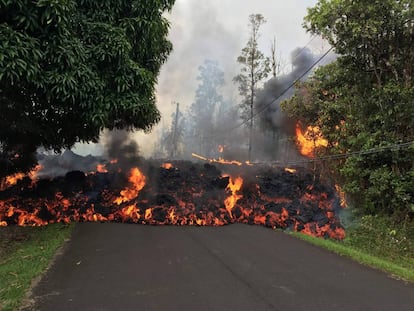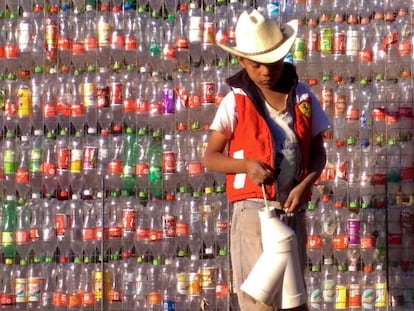Fuego volcano survivor: “The lava was on top of us”
The recent volcanic eruption in Guatemala has left at least 69 dead and affected thousands more

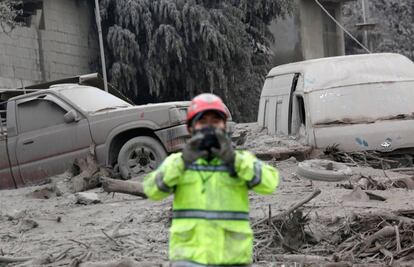
On Sunday, the sky over the southern coasts of Guatemala disappeared behind a thick layer of ash. The Volcán de Fuego, literally “volcano of fire,” erupted at 3pm sending ash, rocks and debris flying. Above the villages and farms everything had become a strange, gray cloud from which nothing could escape. At the same time, the ground began to burn with a long stream of boiling rock that destroyed everything in its path.
They say that more than 200 have died but there must be many more
Police, military officials and volunteers have worked tirelessly to find and rescue the hundreds of injured and missing, fighting against the heat and the clock as they struggled to breathe the ash-laden air. The rescue efforts are focused on the four villages – El Rodeo, La Reina, La Libertad and San Miguel Los Lotes – that were buried under ash and 700°C-molten rock. Many of the locals recall petrifying scenes of people fleeing, many had to be left behind as “the lava had already reached them.”
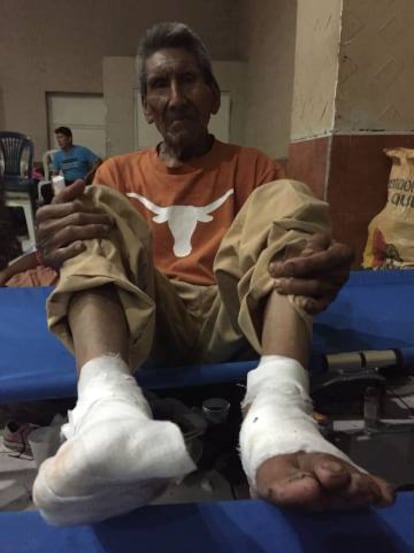
Among the wounded, many wore bandages on their feet. As they began to flee, the lava destroyed the skin of their feet leaving them covered in blisters. Local authorities have so far confirmed the deaths of 69 victims, but rescue efforts speculate that the number is a lot higher as they have been unable to reach many municipalities that were covered with the falling ash.
Olga Gonzales, a 46-year-old in the rescue center of Escuintla located 45 minutes away from the volcano, lost her father and cousin. “They say that more than 200 have died but there must be many more. All of those who could not leave running or stayed behind trying to get their belongings,” she explains as she lies on the floor of the municipal rescue center.
Olga describes the events like a chase scene, a race against a river of lava that flowed from the mountains. “We didn’t have enough time, the lava was on top of us. All we could do was run and cry without looking behind,” she said as she sat with her two sons and her three cousins who fled with her.
The Volcan de Fuego has been active and known to erupt regularly since the arrival of the Spanish in 1541
Fifty-two-year-old farmer Juan Francisco was cutting firewood when he heard the thunderous boom from the mountain. It was a terrible sound different from any he had known. “Then the whole sky darkened and when I realized, a river of lava was already flowing down the slope, engulfing everything.” His neighbor Domingo López, 79, locked himself in his house and stopped the boiling rock from entering. He later escaped through a window in his house via some planks his neighbors had thrown for him. He remembers the gray skies and the scalding vapor that seeped from the ground. “God rest the souls of those who were left behind,” he prayed, with both feet covered in blisters from running on the scorching ground.
Based on the estimates from the local authorities, the volcano has affected at least 1.7 million people in the regions of Chimaltenango, Escuintla and Sacatepéquez, which the Guatemalan government has put on red alert, while the rest of the country is on orange alert. The council of ministers met on the night of the eruption and declared a state of emergency in the three regions. The country has also made efforts to send aid and food to the thousands of victims that have nowhere to go and nothing to eat.
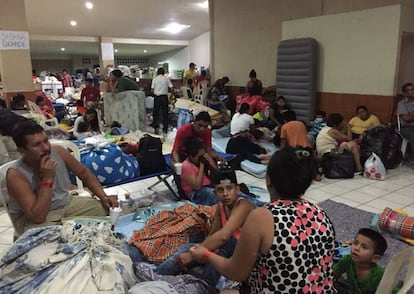
President Jimmy Morales has criticized the country’s budget law as “the state could not spend a cent on aid” if they had not declared a state of emergency. The executive branch of Guatemala has also declared three days of national emergency and has provided shelter for 1,689 people who have lost their homes.
The volcano is “extremely active and is prone to releasing gasses at high temperatures,” explained Eddy Sanchez the director of the Guatemalan institute of seismology. Volcán de Fuego has been active and known to erupt regularly since Spanish conquistador Pedro de Alvarado arrived in 1541, but it has not been violent since 1974. The 3,763-meter peak has lost its vegetation, which now only reaches an altitude of 1,300 meters – above that there is now only solidified lava.
English version by Andres Cayuela.
Tu suscripción se está usando en otro dispositivo
¿Quieres añadir otro usuario a tu suscripción?
Si continúas leyendo en este dispositivo, no se podrá leer en el otro.
FlechaTu suscripción se está usando en otro dispositivo y solo puedes acceder a EL PAÍS desde un dispositivo a la vez.
Si quieres compartir tu cuenta, cambia tu suscripción a la modalidad Premium, así podrás añadir otro usuario. Cada uno accederá con su propia cuenta de email, lo que os permitirá personalizar vuestra experiencia en EL PAÍS.
¿Tienes una suscripción de empresa? Accede aquí para contratar más cuentas.
En el caso de no saber quién está usando tu cuenta, te recomendamos cambiar tu contraseña aquí.
Si decides continuar compartiendo tu cuenta, este mensaje se mostrará en tu dispositivo y en el de la otra persona que está usando tu cuenta de forma indefinida, afectando a tu experiencia de lectura. Puedes consultar aquí los términos y condiciones de la suscripción digital.
More information
Últimas noticias
Most viewed
- Pablo Escobar’s hippos: A serious environmental problem, 40 years on
- Why we lost the habit of sleeping in two segments and how that changed our sense of time
- Charles Dubouloz, mountaineering star, retires at 36 with a farewell tour inspired by Walter Bonatti
- Reinhard Genzel, Nobel laureate in physics: ‘One-minute videos will never give you the truth’
- The Florida Keys tourist paradise is besieged by immigration agents: ‘We’ve never seen anything like this’
